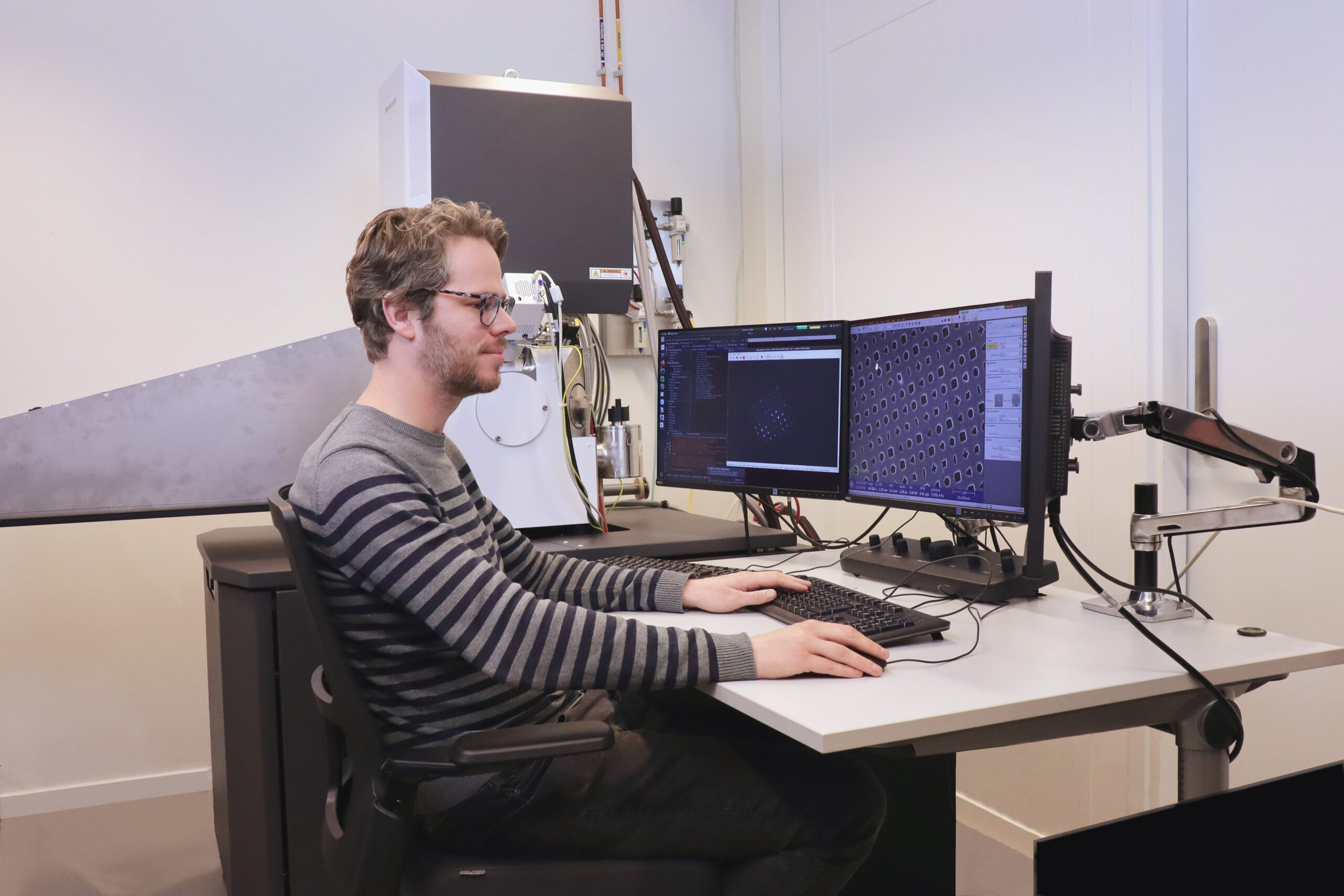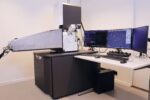
FAST-EM High-speed electronics for a multibeam scanning electron microscope
The revolutionary FAST-EM electron microscope performs scans using 64 electron beams at once. This makes it a hundred times faster than a regular scanning electron microscope. The FAST-EM offers unprecedented new possibilities for scientific and medical institutions. A high tech innovation of such scale touches upon many different areas of expertise. That is the reason why the multi-beam electron microscope is the result of a close collaboration between Thermo Fischer, TU Delft, Technolution Advance, and Delmic. The FAST-EM will be marketed by Delmic.
Collaborating to benefit development
All parties of the development consortium contribute to the further development of this innovative technology with their expertise and investments. Thermo Fisher is a large American player in the field of medical devices and life science solutions. Delmic is specialized in technology for microscopy. The idea of the multi-beam electron microscope was the result of groundbreaking research done by the TU Delft. Technolution Advance develops essential components, such as the electron camera and the high speed data processing, for the FAST-EM using electronics and software. The strong features of each party come together to make the FAST-EM.
Volume Electron Microscopy:
extremely detailed, vast amount of data
A scanning electron microscope (SEM) produces a detailed image with a resolution of a few nanometers. On that scale, the individual atoms can almost be distinguished. A regular SEM scan uses a single electron beam. This has one significant disadvantage: it takes a lot of time. Scanning a sample of only a couple of millimeters will take days or even weeks. The FAST-EM reduces this time to several hours due to the use of 64 electron beams. This multi-beam technology is therefore also referred to as volume Electron Microscopy (vEM).
Benefits healthcare, science, and industry
The high speed of the FAST-EM creates lots of new possibilities. Doctors can, for example, make diagnoses in a short amount of time based on 3D-images. They can view the images remotely and share them with other doctors. Science and the smart industry will also benefit from the speed the FAST-EM has to offer.
The FAST-EM is now being used by the University Medical Center Groningen and the TU Delft. The University Medical Center Groningen uses the FAST-EM to make an atlas of the human body. This allows for prominent features and striking elements of medical samples to be easily located. The TU Delft uses the FAST-EM for researching the brain and the onset of brain diseases.
More new technology
The development of the FAST-EM requires a lot of innovative technology. Scanning with 64 beams at once generates a vast amount of data. 10 gigabyte per second, to be exact – which continues for hours at a time. We have developed electronics for detection and data transport that can process this extreme data speed. These electronics entails the camera at the heart of the FAST-EM.
The analysis of the vast amounts of data also requires new technology. We have therefore together with UMCG and the TU Delft, developed a data acquisition platform based on streaming data. This Imaging Data Platform (IMDAP*) organizes and analyses the scan data of the electron beams. The images of individual beams are ‘stitched’ together with advanced algorithms. This creates a good 2D- or 3D-visualization of the sample. Users can quickly zoom in on and out of visual data, thanks to a ‘pyramid’ of stacked images that show the sample with an increasingly higher resolution, not unlike Google Maps.
Further development
The FAST-EM offers a revolution for science as well as the medical field. However, the FAST-EM is only one link in the chain. The high scan speed requires new technology, both for the input of samples as well as the export and storage of scan data. The consortium continues developing the FAST-EM chain, allowing the user to automatically and quickly create and scan samples. This is particularly useful for detailed 3D-scans, since that requires thousands of samples.
*The development of IMDAP was made possible by a contribution of the European foundation for regional development (EFRO) and was co-financed as part of the responds of the European Union to the Covid-19-pandemic.
Watch Delmic’s video episode 2 (The bridge) for more details.
Award winning Technology





